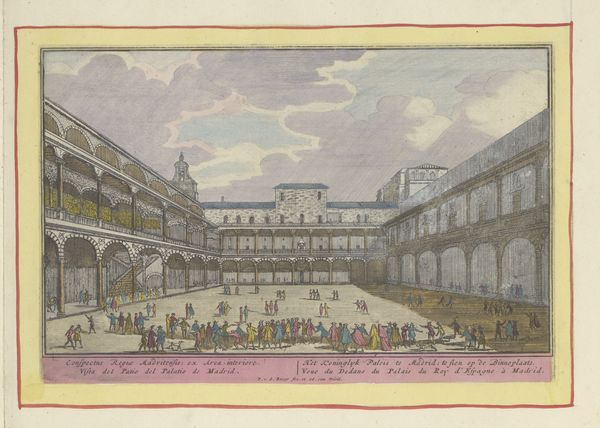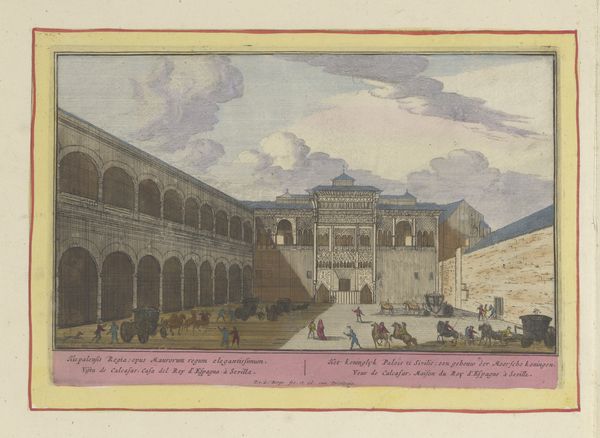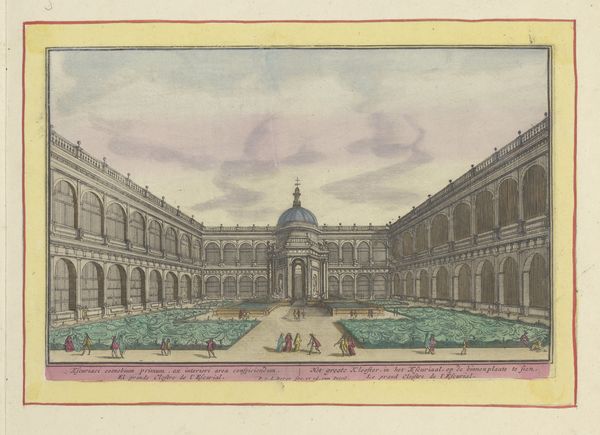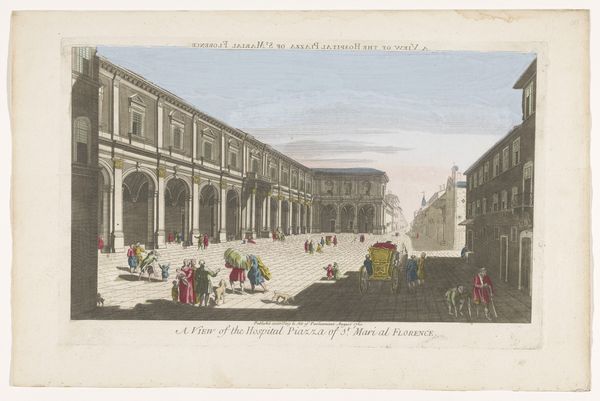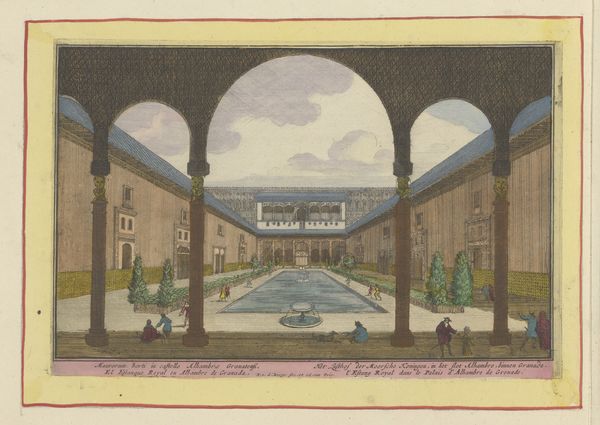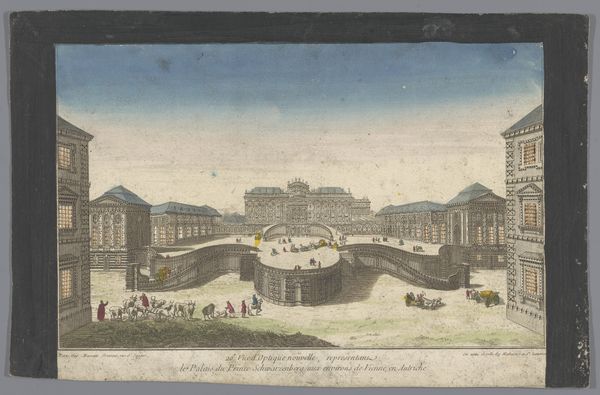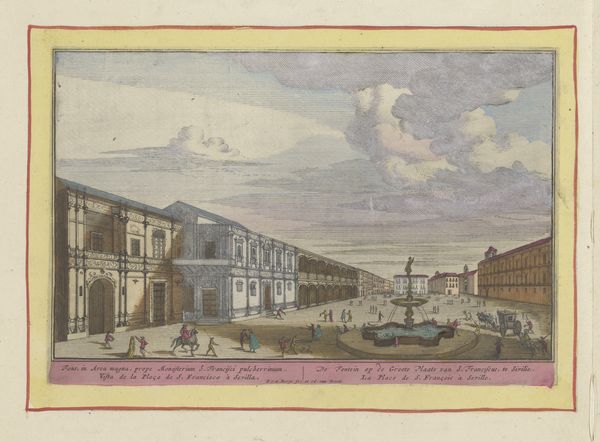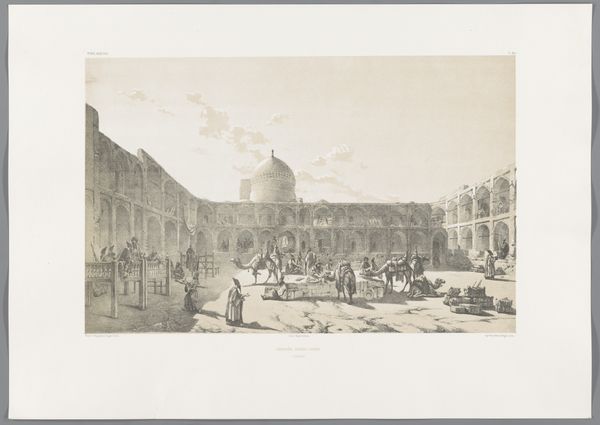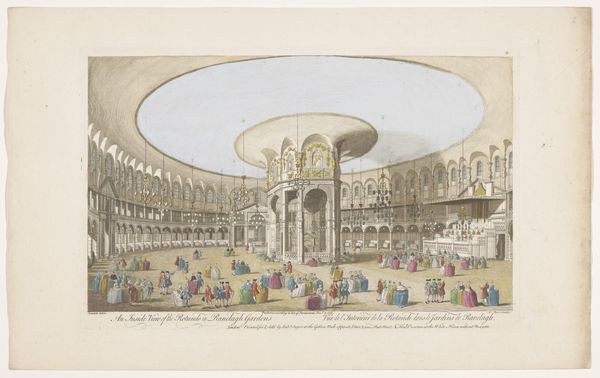
Gezicht op de binnenplaats van een van de kloosters in het Escorial 1694 - 1737
0:00
0:00
painting, watercolor, architecture
#
baroque
#
painting
#
landscape
#
watercolor
#
watercolor
#
architecture
Dimensions: height 165 mm, width 252 mm
Copyright: Rijks Museum: Open Domain
Curator: It’s astonishing how stark yet captivating this watercolor is! There is almost something haunting about the architecture and symmetry. Editor: Indeed. This watercolor rendering by Pieter van den Berge offers us a peek into the courtyard of the Escorial monastery. While it’s officially dated between 1694 and 1737, it reflects artistic values echoing throughout the baroque period. Curator: I am intrigued by how the baroque style plays here! Given its emphasis on grand spectacle, this almost austere interpretation feels like a subtle twist. Instead of overt flamboyance, we see echoes of spiritual contemplation and retreat reflected through severe symmetry, a vastness and scale diminished by these tiny figures wandering throughout the yard. Editor: It's important to note the period’s interest in representing power, institutionally speaking. Van den Berge here highlights the spatial and architectural dominance of the monastery and thus, perhaps, the powerful cultural sway such an institution had. And let us not ignore that it’s a Dutch artist portraying the inner sanctums of the Spanish crown – a curious act given the fraught political realities. Curator: Precisely, this tension adds a compelling dimension. Those echoing arches aren't merely structural; they symbolize the weight of history, belief, and, yes, the inherent power structures that underpin this religious compound. Editor: The placement and inclusion of figures really serve a political purpose here. Observe how van den Berge carefully positions them so that their inclusion accentuates the enormousness of their surroundings. I interpret this is his strategy of accentuating scale in order to imbue it with even more political oomph. Curator: The technique of using small figures against grandiose settings often triggers the sense of insignificance we each carry as temporal beings. That juxtaposition is incredibly poignant. How easily does individual agency and intent shrink when considered inside the parameters of vast, long-held power structures and faith-based systems? Editor: Absolutely. Looking at it from a social historical angle allows for deeper contemplation regarding the place and cultural relevance of monasteries, religious power, and artist agency. Curator: Van den Berge provides more than simply watercolor and architectural documentation; he paints a portrait of history’s palpable, ongoing reverberations. Editor: I agree, and reflecting upon this piece emphasizes the layered functions of art as more than just imagery, instead a reflection of its time.
Comments
No comments
Be the first to comment and join the conversation on the ultimate creative platform.
